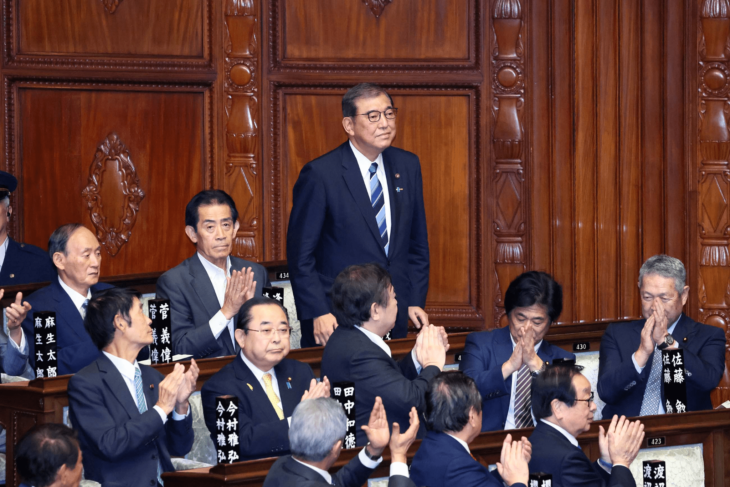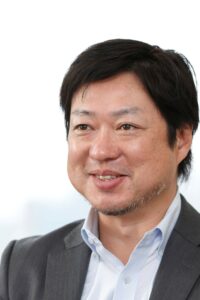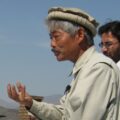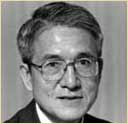Asian NATO Is Not Viable: The Seriousness of a “Security Expert” Politician’s Lack of Basic Understanding

On September 27, 2024, Ishiba Shigeru, who won the LDP presidential election, was nominated as the 102nd Prime Minister of Japan as a result of the Prime Minister nomination vote held in the House of Representatives on October 1. Ishiba is a politician known as an expert on defense issues, but his claim of “Asian NATO” has caused controversy both at home and abroad.
Photo: Cabinet Public Affairs Office
The impact of Ishiba’s “Hudson Paper”
Ishiba Shigeru, who became the 102nd Prime Minister of Japan, is a self-recognized expert on defense issues, having served as Director-General of the Japan Defense Agency in the Koizumi Junichiro Cabinet and Minister of Defense in the Fukuda Yasuo Cabinet. He has described “national defense as my life’s work,” and is a heavyweight on the Liberal Democratic Party’s National Defense Division and the Security Research Commission, as well as a noted policy wonk in the political world as an expert on foreign affairs and security. He has not only participated in debates in the Diet, but has also actively published books and essays on defense issues, and is unique in having raised such issues in depth as a Diet member, particularly regarding Japan’s post-Cold War defense policy and the government’s interpretation of the defense-related Constitution.
Since Ishiba retired as Minister of Defense in 2008, the security environment surrounding Japan has become more severe, and Japan’s foreign affairs and security policies have undergone major overhauls, including the formulation of Japan’s Legislation for Peace and Security under the second Abe administration, a significant increase in defense spending under the Kishida Fumio administration, and the Cabinet decision on the three security documents that incorporate counterattack capabilities. In the Liberal Democratic Party (LDP) presidential election, before which Prime Minister Kishida announced that he would not run and in which a record nine candidates competed, the qualities of a leader to be entrusted with security policy in times of emergency were increasingly emphasized.
Ishiba, who ran in the LDP presidential election for the fifth time, had distanced himself from the practical aspects of foreign and security affairs for a while, but he still seemed to have sufficient knowledge and achievements in the security field. Many of the lawmakers who voted for Ishiba in the presidential runoff probably had confidence that he could be trusted with foreign and security policy.
However, Ishiba’s paper “The Future of Japan’s Foreign Policy,” which was published by the Hudson Institute, a US think tank, on September 27, the day he was elected as the new president, and which caused controversy both at home and abroad, cast great doubt on these expectations. This author was surprised that the opening proposal was “the creation of an Asian NATO,” and there were many parts where the logic behind why such a concept was necessary was difficult to understand. The paper was peppered with recommendations that would have led to fundamental changes in defense policy and the Japan-US Alliance, such as the sharing of nuclear weapons, which would involve the introduction of nuclear weapons, and revisions to the US-Japan Status of Forces Agreement (SOFA), and these were scattered somewhat incoherently.
These proposals could be interpreted as merely election material for the LDP presidential candidate to vigorously publicize his personal claims to fight through the presidential election. In fact, the structure of the paper, which is less than 3,000 characters in Japanese, is prosaic and lacks logical consistency in many places, making it hard to imagine that it was revised by government officials. Moreover, it does not seem to take into account the current security situation or the progress of Japan’s security policy formation over the past 10 years. It is a list of past proposals as if time had stopped somewhere. None of the proposals can be said to have considered the understanding of the domestic and international situation, or the feasibility and the implementation process in the development of foreign policy after becoming prime minister.
Ishiba’s Prime Minister’s Office was forced to put out the fire
After the presidential election, while the Prime Minister’s Office was busy forming and appointing cabinet members, the “fire-fighting” of the controversial Hudson Paper was going on at the same time. Neither Iwaya Takeshi, who became Minister of Foreign Affairs, nor Nakatani Gen, who became Minister of Defense, had any Prime Ministerial instructions regarding the main points of the Hudson Paper, including Asian NATO. In Ishiba’s policy speech after becoming Prime Minister, he settled on a moderate expression regarding foreign and security policy: “Giving due consideration to the current state of affairs, we will leverage diplomacy grounded in realistic national interests. With the Japan-US Alliance at the core, we will increase the number of friendly and like-minded countries and reinforce in a balanced manner our diplomatic and defense capabilities in tandem to achieve peace for Japan and stability in the region.” The issues raised in the Hudson Paper were shelved just a week after the presidential election victory.
Given these circumstances, it seems that Ishiba’s proposal for Asian NATO has vanished into thin air. In fact, it is said that Asian NATO was not even brought up at the ASEAN (Association of Southeast Asian Nations)-related Summit meetings held from October 10 to 12, which was Ishiba’s first overseas trip. Before his overseas trip, Ishiba instructed the LDP Policy Research Council (Chairperson Onodera Itsunori) to consider the nature of Asian security, but the direction indicated was, “As the ruling government party, we will solidify the current minilateral framework (author’s note: cooperation framework between a small number of countries) step by step, while organically and in a multi-layered way coordinating with the Japan-US Alliance at the center” (Nagashima Akihisa, Special Advisor to the Prime Minister for National Security Affairs), and it appears that the issue of Asian NATO is already no longer being raised.
However, even though Ishiba has corrected his course by saying, “I have repeatedly expressed my views [on Asian NATO] as a member of the Diet, but of course I do not think that it will be realized overnight” (in a response to a plenary session of the Lower House on October 7), the fact that the issue raised by Ishiba, who is known as an expert on defense policy, has been completely changed in such a short period of time is problematic on a different level. If Ishiba won the presidential election by proposing the creation of an Asian collective defense system centered on an Asian NATO, and then immediately withdrew this proposal after taking office, it would render the very essence of the policy-oriented democratic process meaningless.
This reflects a governance problem in that, aside from senior government officials, the National Security Secretariat (NSS), and members of the security policy community—such as the Ministry of Foreign Affairs, the Ministry of Defense, and the Self-Defense Forces—basic knowledge of security policy is less widespread among politicians than one might expect. Since the second Abe administration, Japan’s security policy has undergone a dramatic evolution during the 12 years of the stable LDP-Komeito administration. However, only a very small number of Diet members possess a comprehensive understanding of the changes in the international security environment, the realities of the Japan-US Alliance, cooperation among like-minded nations, multilateral security cooperation, and the evolution of defense policy. If this lack of basic understanding also applies to Ishiba, a key figure in the ruling party’s defense faction, then the situation is nothing short of serious.
National security is the most critical issue for the nation. If the government acts appropriately, the entire nation will benefit, but if it acts improperly, a national disaster could result. The government plans to raise defense force development spending to 43 trillion yen over the five years from fiscal 2023—1.6 times the previous amount—and this total is certain to increase further from fiscal 2028. It is the people who will bear the financial burden of this growing defense expenditure, and without a proper understanding of security issues by both the public and Diet members, the long-term policy foundation remains uncertain. The fundamental problem is that Ishiba’s inappropriate Asian NATO concept, which he suddenly introduced both domestically and internationally, has cast doubt on this foundation.
The Three Sources of Asian NATO in the Ishiba Style
Here are some of the reasons why Ishiba proposed the idea of an Asian NATO. First, Ishiba is a politician with a strong sense of the independence of nations and the equality of alliances. Ishiba regards the Japan-US Security Treaty as “the only asymmetric bilateral treaty in the world” (Ishiba Shigeru, Hoshu Seijika: Waga Seisaku, Waga Tenmei [Conservative politician: My policies, my mission]) and considers the relationship in which the United States is obligated to defend Japan and Japan is obligated to provide bases to be exceptional in the world, expressing his recognition that Japan has “always put off” thinking deeply about the country’s fundamentals, such as independence, national sovereignty, and the right to self-defense. Ishiba’s focus on the “imbalance of the asymmetric nature of the Japan-US Alliance” can be said to be the origin of his view of alliances.
In his many writings, Ishiba cites the example of Shigemitsu Mamoru (1887–1957), the Japanese foreign minister who in 1955 urged US Secretary of State John Foster Dulles to withdraw US troops in exchange for Japan’s promise that “Japan will practice the Collective Defense right, to protect the United States of America including Guam.” Shigemitsu’s vision for revising the security treaty included a proposal to replace the unilateral security treaty with a “new defense treaty based on mutual defense,” which would require each party to defend the other against armed attacks on the Western Pacific region. For Ishiba, the exercise of the right of collective self-defense would establish equality in mutual defense and even lead to the reduction of US military bases (Ishiba Shigeru, Nihonjin no tameno ‘Shudanteki Jieiken’ Nyumon [Introduction to ‘collective self-defense’ for Japanese people]). An extension of this would have been Shigemitsu’s idea of a multinational mutual defense system in the Western Pacific (what today we would call Asian NATO).
The second point at the origin of Ishiba’s Asian NATO is his unique understanding of the “legal principles” of the right of collective self-defense (the right to retaliate together when a country with close ties to one’s own country is attacked, even if one’s own country is not directly attacked) and collective security (a framework in which all participating countries mutually prohibit the use of force, and all other countries unanimously take collective measures in the event of a violation). The author was at a loss as to the meaning of the sentence “the absence of a collective self-defense system like NATO in Asia means that wars are likely to break out because there is no obligation for mutual defense” that Ishiba wrote in the Hudson Paper. However, this is the key to Ishiba’s important thinking behind his insistence on Asian NATO, and the author came to believe that without understanding this point, it would be impossible to prevent a recurrence of similar arguments.
According to Ishiba, the right of collective self-defense based on a “doctrine of right” and collective security based on a “doctrine of obligation” are similar but different concepts (Hoshu Seijika). It is unclear how Ishiba distinguishes between a collective defense system based on the mutual exercise of the right of collective self-defense, such as NATO, and collective security, such as the United Nations. However, Ishiba’s intention seems to be to argue that the right of collective self-defense is merely an affirmation of an “inherent right,” and that the important thing is to make it obligatory. For Ishiba, a relationship in which Asian countries affirm each other’s mutual defense obligation on an equal footing is a more mature security system than a bilateral security treaty that Asian countries conclude individually with the United States. The idea itself should not be rejected.
The third point is that an Asian NATO is necessary to maintain the “regional balance of power.” By expanding multilateral networks through cooperation not only with the bilateral alliance with the United States, but also with frameworks such as the “Five Power Defence Arrangements (FPDA)” between the United Kingdom, Australia, New Zealand, Malaysia, and Singapore, and ANZUS between the United States, Australia, and New Zealand, it is “possible to eventually develop a large collective security system.”
On the other hand, while Ishiba’s Asian NATO concept openly expresses its intention to counter China, stating that “the creation of an Asian version of NATO is essential to deter China by its Western allies” (Hudson Paper), he also states that “it is something that should be said to China, ‘This is a system for maintaining peace, so please join us’” (Ishiba Shigeru, Iron Seiron [Dissenting opinions, right opinions]). Ishiba’s discourse also includes a very different view of whether Asian NATO is something to counter China or, conversely, something to include China.
It is difficult to understand Ishiba’s acrobatic ideas. However, if we make a rather bold guess at Ishiba’s intentions, we might interpret them as a gradual process: (1) organically linking bilateral alliances in Asia, (2) gradually deepening official relations and multilateralizing them, (3) establishing a framework to counter China for the time being, and (4) when there is no longer a need to counter specific threats, establishing a cooperative security system in Asia like the Organization for Security and Co-operation in Europe (OSCE).
Realities and Divergences of the Asian Security Environment
While the origins of Ishiba’s Asian NATO concept can be recognized as the diplomatic vision of a single politician, they are unfortunately far removed from the realities of Asian security. Asia lacks the foundational structure necessary to support a regional collective defense system and it is not possible to assemble mutual defense relationships among countries as if piecing together a puzzle. Furthermore, the very use of the term “Asian NATO” could hinder the ongoing development of security cooperation among like-minded countries. These points become evident when one examines the evolution of the Asian security environment from the end of World War II to the present.
The foundation of Asian security since World War II has been the bilateral alliances and partnerships between the United States and its allies, which have been described as “hub-and-spokes relationships” with the United States at the center. The answer to the fundamental question of regional security, “Why is there no NATO-like framework in Asia?” can be roughly explained as follows.
The strategic environments of Europe and Asia are fundamentally different, and there is a big difference between the land theater in contiguous Europe and the maritime theater in the broader Asia. This is because the needs for collective defense are qualitatively different in Europe, a community where land battles are transferred to the problems of the whole of Europe, and in Asia, where the problems are diverse and the connection between them is not self-evident. This is why there are different bilateral mutual defense treaties between Japan and the United States, the United States-Korea, the United States-Australia (NZ), the United States-Philippines, and the United States-Thailand (note that in the case of Thailand, the treaty takes the form of an extension of the 1954 Southeast Asia Collective Defense Treaty [Manila Pact]).
There have been longstanding attempts to better connect Asia’s hubs and spokes, but most have failed. The Southeast Asia Treaty Organization (SEATO), formed in 1954, had the appearance of an eight-nation alliance, including the UK, US, France, and Australia, but was dissolved in 1977 due to disagreements over the Indochina issue and the Vietnam War. ANZUS (Australia, New Zealand, United States Security Treaty), a framework for joint defense between the US, Australia, and New Zealand, also became a mere formality when New Zealand withdrew from it in 1986. In Southeast Asia, the formation of ASEAN in 1967 and the promotion of the neutrality initiative made it difficult to even raise the idea of expanding cooperation among the US-led alliances after the Vietnam War.
While Europe underwent a structural transformation after the Cold War, with NATO’s eastward enlargement and organizational reform increasing the number of members, there has been no expansion of alliances or institutional change in Asia. The Korean Peninsula, the Taiwan Strait, and the South China Sea, remnants of the Cold War, remain at the center of security concerns, and historical continuity rather than the “End of History” is the main theme. However, the end of the Cold War as a macrostructure of international politics also had a major impact on Asia, and since the 1990s, multilateral security dialogues have been actively developed to complement US alliances (hub-and-spokes) and security cooperation in response to problem areas.
This new security architecture was attempted in Asia Taiheiyo no Anzenhosho Akitekucha: Chiiki Anzenhosho no Sansokozo (Regional security architecture: Three-tier structure of regional security) (Nippon Hyoronsha, 2011), which the author edited and wrote. In this book, security in Asia is classified into alliances and their networks (first tier), issue-specific security cooperation (second tier), and region-wide institutionalization (third tier), and is viewed as a three-tier interaction that unfolds according to the intensity of threats and policy objectives. For example, policy coordination among Japan, the United States, and South Korea on North Korea has progressed since the 1990s; Japan-Australia and Japan-US-Australia security relations developed in the 2000s, focusing mainly on counterterrorism measures; and disaster relief cooperation following the 2004 Indian Ocean earthquake and tsunami was the starting point for the Japan-Australia-India-US (Quad) grouping. And in the Philippines, Japan and Australia have steadily provided assistance to the Coast Guard since the 2000s. In the post-Cold War era, Asia has developed a different model of security cooperation than NATO.
Put an end to the Asian NATO debate
Today’s cooperation among US allies in Asia is positioned as an extension of this first-tier security cooperation. Of course, the Japan-US-South Korea summit at Camp David in August 2023 and the US-Japan summit in April 2024 have certainly entered a new phase in terms of explicitly promoting security cooperation between leaders. The trilateral security partnership between Australia, the United Kingdom, and the United States (AUKUS) is a framework that was unimaginable when the above-mentioned book was published in 2011, and Japan’s intention to join AUKUS “Pillar II,” which focuses on defense technology cooperation, can be said to be a new cornerstone of the security partnership.
But to call this security cooperation an Asian NATO is to miss the point. The essence of NATO is the collective defense of Article 5 of the North Atlantic Treaty, which treats an armed attack against one signatory as an attack against all signatories and requires joint action. The United States has a defense obligation in hub-and-spoke relationships, but such defense obligations are not aimed at between allied countries (relationships between spokes). Even considering the relationship between Japan, South Korea, Australia, and the Philippines (India), it is inappropriate for the Self-Defense Forces to be involved in a military conflict between India and Pakistan over the Kashmir issue (or the Sino-Indian border dispute), or for the Indian Navy to come to the defense of the Senkaku Islands. While the examples are not as extreme as these, it is difficult to imagine joint action by allies and partners in the Korean Peninsula, the Taiwan Strait, and the South China Sea. This is the basis for US policymakers to deny that recent security cooperation is “a policy aimed at becoming an Asian NATO.”
Moreover, promoting spoke-to-spoke cooperation with the aim of creating an Asian NATO will hinder the search for autonomy, freedom of choice, and hedging (risk avoidance) in security policy within the spokes. The current deepening of cooperation is incremental, recognizing the differences in security strategies and priorities between Japan, South Korea, Australia, the Philippines (India), while at the same time strengthening military cooperation and interoperability between militaries, and the accumulation of these will gradually lead to a common strategy. And the premise for this is the reality that while the countries share the general idea of strengthening deterrence against China, there is little common ground among them when it comes to specific issues such as the end point of strategic competition with China and the red line for sovereignty violation.
Therefore, the ultimate goal of the current lattice-like alliance cooperation is not based on an Asian NATO. Confusing expressions such as “like NATO” and “mini-NATO” are also unclear and meaningless. However, as Michael Green, Chief Executive Officer at the United States Studies Centre at the University of Sydney, put it in the US magazine Foreign Policy in his article “Never Say Never to an Asian NATO,” if strategic competition with China were to become an irreversible conflict for all allies (such as a full-scale invasion of Taiwan), then the term might hold marginal value as a tool for strategic communication to signal the potential emergence of a NATO-style military alliance. Otherwise, it may be time to abandon the concept altogether.
Translated from “Ajia-ban NATO wa Naritatanai: “Anpo-tsu” Seijika ga Kihontekirikai wo Kaku Shinkokusei (Asian NATO Is Not Viable: The Seriousness of a “Security Expert” Politician’s Lack of Basic Understanding),” Chuokoron, December 2024, pp. 96–103 (Courtesy of Chuo Koron Shinsha) [January 2025]
Keywords
- Jimbo Ken
- Keio University
- Ishiba Shigeru
- Hudson Paper
- The Future of Japan’s Foreign Policy
- Asian NATO
- national defense
- LDP presidential election
- Japan-US Alliance
- Asian security
- collective self-defense
- mutual defense
- hub-and-spokes relationships
- Quad
- AUKUS
inistration).





